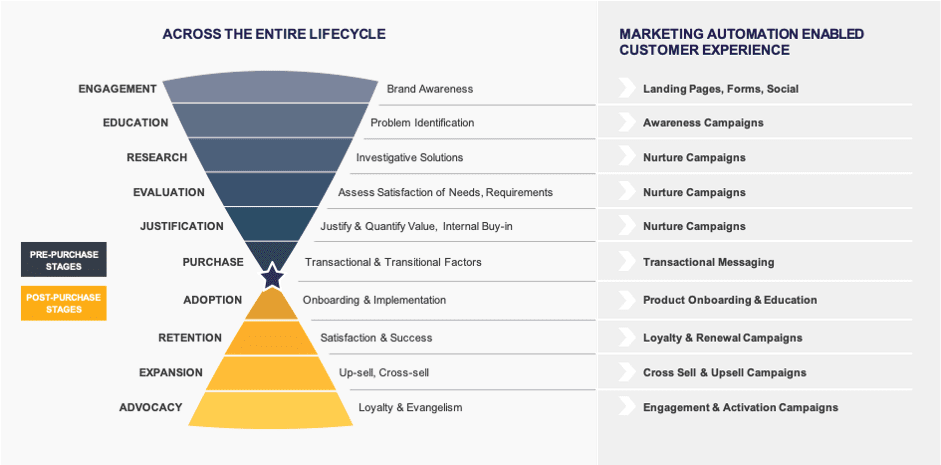Salesforce Marketing Cloud is a powerful platform to execute your marketing strategy, but implementation and usage aren’t easy if you want to get the most from the platform. Become aware of some potential pitfalls and their solutions to get the most out of SFMC.
Once organizations understand the benefits of Salesforce Sales Cloud, a natural next step is to implement another Salesforce cloud. For many companies, Salesforce Marketing Cloud (SFMC) is the next addition.
SFMC is Salesforce’s marketing tools platform. Its capabilities include multi-channel marketing automation, advanced personalization and applied artificial intelligence. The platform enables your organization to use the information in Sales Cloud and other enterprise systems to improve engagement with customers and prospects.
Marketing Cloud also provides engagement and interaction data to Sales Cloud, the Salesforce customer data platform or other systems to enable a more complete view of your customers. It’s a robust and feature-rich platform that requires expertise and experience to implement. When done correctly, it can yield significant benefits to your organization and customers.
How can you ensure you realize all the platform’s benefits, including how to use it to meet your business goals and make it a positive investment? Success depends on avoiding some of the most common pitfalls – doing so will make a huge difference in your experience and results.
So, what is the most obvious indicator that there are problems?
Suppose you’re considering investing in Marketing Cloud. Or perhaps you have implemented it and are responsible for ensuring it delivers on the expectations and is viewed as a worthwhile investment. In either case, you want to avoid underutilization and stagnation at all costs. If you are experiencing this now, learning the solutions to your current problems will help you get back on track.
Working with numerous clients, I have found several factors that can cause stagnation. Let’s look at a few of these contributing factors and their solutions.
Lack of SFMC Knowledge and Technical Expertise
Our clients that use Marketing Cloud may understand their instance in its current configuration, but they often don’t have the technical knowledge to advance their usage. A common situation is companies use Marketing Cloud at a steady state, with the initial implementation and configuration determining its ongoing state. They don’t use the broader capabilities or more recently released features.
This can happen in companies in any industry and on teams of all sizes. Individuals on smaller teams often have various marketing responsibilities and may not have a strong technical person with specific Marketing Cloud knowledge.
On larger teams or in bigger organizations, the IT organization may support SFMC among its responsibilities for multiple other tools. They often don’t have deep Marketing Cloud expertise and are in a primarily administrative or “keep the lights on” role.
The Solution
Identify an individual in your organization whose responsibilities will include developing Marketing Cloud expertise, obtaining appropriate SFMC certifications and staying knowledgeable on the latest releases. Allow this person dedicated time to devote to this role and include it in their development goals.
You should also have a manager accountable for increasing internal SFMC knowledge. This should be a department goal, which removes the burden from being solely on the team member identified as the SFMC expert. This solution comes with a reduced capacity for non-SFMC work your organization will need to recognize, accept and plan for accordingly.
Lack of Team Capacity
The people or teams responsible for Marketing Cloud are often very execution based and operational in focus. They may not have the available capacity to do projects to increase the use of the platform’s capabilities, even if they know how.
This issue occurs in companies of all sizes, and adding people to the team doesn’t always provide the solution. Often, a backlog of existing campaign work consumes the additional resources, or they get pulled in to support another important project or goal instead of working on projects to advance Marketing Cloud.
The Solution
Specifically allocate time to do SFMC advancement projects, just as you would for other work – like campaign execution – and track it as such. Incorporate this SFMC-focused time into team and personal work plans, and build support for these projects internally and externally for the team. The necessary department manager should have SFMC advancement as a departmental goal for which they are accountable.
Finally, communicate the completion of these projects and the resulting new SFMC capabilities as a catalyst for future Marketing Cloud projects and celebrate the team’s success.
Insufficient Data Available to Salesforce Marketing Cloud
Marketing Cloud does not always receive all of the data it can use to enable its full functionality – nor receive it on time. Even if you integrate Marketing Cloud with Sales Cloud, it will only receive a subset of all the data the marketing team could use to improve customer engagement, deliver experiences and drive sales. A common scenario is there may be data in another system besides Sales Cloud that could provide valuable and actionable data to Marketing Cloud.
The more timely and relevant data the Marketing Cloud receives, the more likely you’ll see the following benefits:
- Creation of new opportunities to communicate with and engage leads and customers
- Increased and advanced Marketing Cloud use resulting in additional SFMC-created data to develop a complete view of the customer
- The ability to deliver a better customer experience.
The Solution
When you develop your annual marketing plan, map those goals to the objectives Marketing Cloud supports and the associated data required. This will serve many functions, including:
- Becoming aware of where (and if) the data exists in your organization and in which systems it resides
- Understanding what teams you may need to involve in any integrations — including the communication, coordination and prioritization necessary
- Securing any budget necessary as part of annual financial planning.
Ideally, the marketing team knows what data is being collected throughout the organization and can easily access what it believes to be valuable. Then they can develop a vision for how to use all of the data available to enable SFMC.
Lack of Marketing Maturity
A holistic view of the customer experience through understanding all the data available from Marketing Cloud and the other platforms in the martech stack is a sign of marketing maturity.
Your marketing team may still be growing in understanding the customer experience – this is not uncommon. This growth should include having a developed customer lifecycle, using analytics (not just reporting), defined strategies that align with goals, and a roadmap to get there.
A component of marketing maturity is understanding how to use marketing technology to its greatest potential. For example, Marketing Cloud can support the customer experience across the entire customer lifecycle in many different ways (see the image below). Often, companies only use it for a small portion of what is possible.
The Solution
Develop a plan to mature your organization’s alignment of people, processes and technology (PPT) with your current and planned future state. This plan should encompass three primary components of maturity:
- Data
- Content
- Analytics.
This requires assessing your current state, defining your desired future state, and making a roadmap to get there. It will entail coordinating advancement in all the components across the PPT, and while it’s an investment, it will pay dividends.
The future state should also include advancing the marketing team’s knowledge. It can also include educating other parts of the organization about marketing’s increased capabilities, role and value in the larger picture and the benefits your business will receive.
Lack of Strategic Ownership
Your organization needs strategic ownership of your martech stack, including Salesforce Marketing Cloud. This ownership helps ensure it receives the necessary attention and resources to fully develop it, best utilize it, and have it included as part of your overall business strategy. This person should understand how to use Marketing Cloud strategically to define, deliver and advance the business and marketing goals of the organization as well as the customer experience.
This ownership includes defining strategic and business goals, metrics that show the impact of using Marketing Cloud, and return on investment of SFMC and related projects. This step goes beyond Salesforce Marketing Cloud data and reporting on campaigns and journeys into business outcome reporting. The goal is to can quantify the true benefits of the platform and overall martech stack in measures the business cares about and understands.
Business outcome metrics often include incremental revenue, quicker sales conversions, increased customer engagement, and increased product downloads or product usage.
The Solution
Give strategic Marketing Cloud ownership to a person or team with executive sponsorship. This level of support can assist in securing the necessary resources and prioritization of Marketing Cloud advancement projects. This executive can justify SFMC advancement investments based on known business priorities. This justification is important and often required since the projects that advance Marketing Cloud may require support from, or impact, multiple teams across the organization.
Common examples of cross-team impact include integrations between platforms different teams own and changes to processes (or data) other teams use (e.g., Sales).
Finally, the SFMC strategic owner may also need to drive agreement on the business outcome reporting metrics the company will use and secure assistance in generating and adopting them across the organization, which is another instance where executive-level sponsorship is valuable.
Conclusion
Salesforce Marketing Cloud represents a significant investment, both financially and organizationally. It’s in your best interest to learn how to make the most of this investment. Salesforce constantly evolves and updates Marketing Cloud with new features and capabilities via multiple releases each year. These releases provide great value, but they also require customers to actively engage in ownership of their instance of Salesforce and not take the “set it and forget it” approach.
Don’t view Marketing Cloud as a one-time launch but as a constant evolution with a well-orchestrated approach to constant advancement. Thoughtful planning – including planning to avoid the most common pitfalls mentioned – will go a long way toward being successful.
Finally, don’t let the potential pitfalls overwhelm you. Many companies use Salesforce partners to assist with avoiding the pitfalls and advancing their SFMC instances. Using Salesforce Certified Partners has many advantages. You can provide technical expertise for advanced projects beyond your team’s current knowledge while providing strategic guidance on using Marketing Cloud. This allows you to mature into your usage at your own pace – all while avoiding impact on your internal resources and allowing them to focus on existing business priorities.


